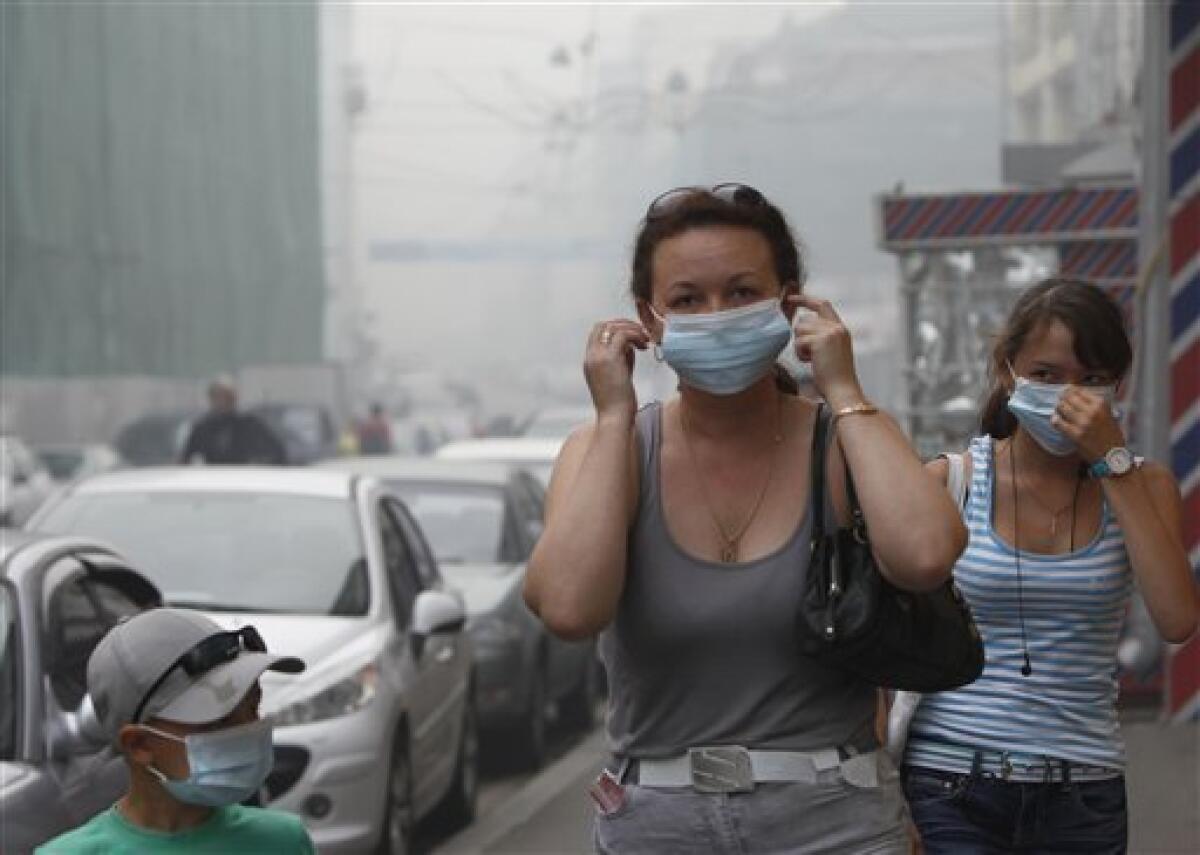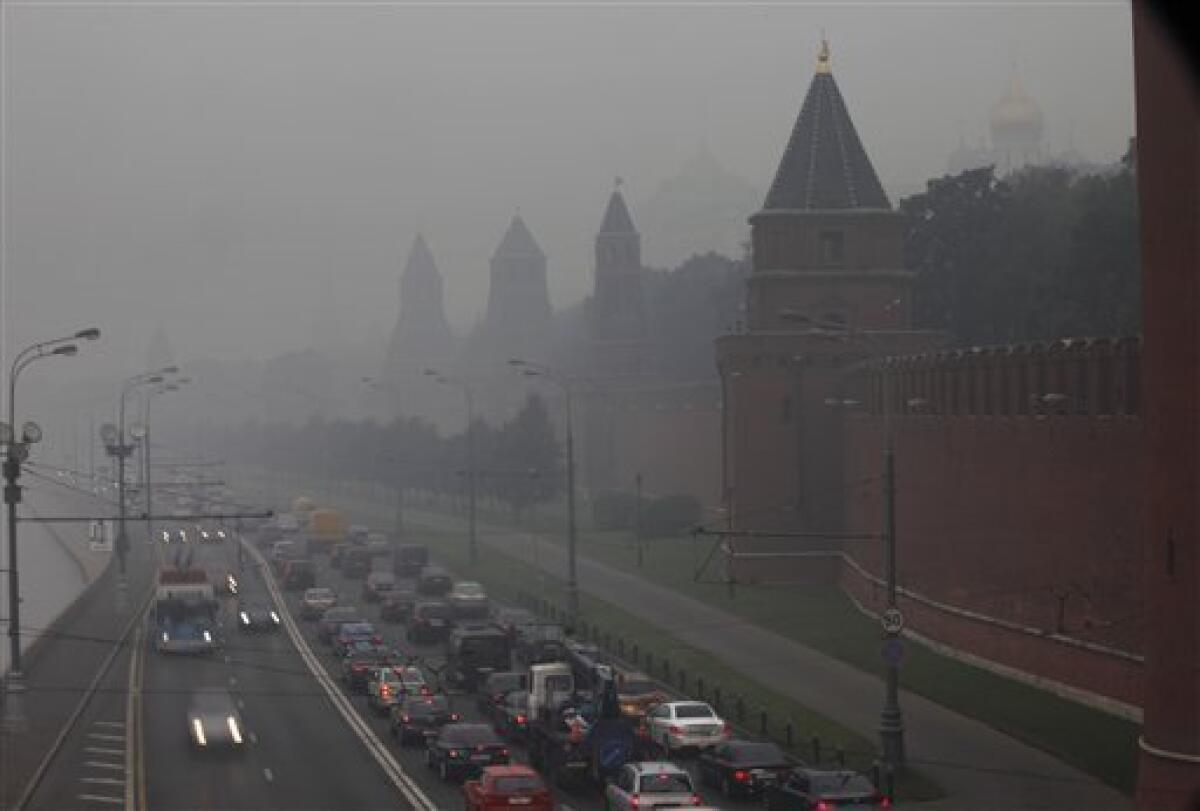Worst smog yet hits Moscow, seeps into homes


The city of Moscow was shrouded Friday by a dense smog that grounded flights at international airports and seeped into homes and offices, as wildfires that have killed 50 people nationwide continued to burn.
The fires have torn through forests and villages over the last two weeks with lightning speed, also decimating a military base and threatening an animal shelter with hundreds of inhabitants.
On Friday, visibility in parts of the capital was down to a few dozen yards (meters) due to the smog caused by the fires, which carries a strong burning smell and causes coughing. Airborne pollutants, such as carbon monoxide, were four times higher than average readings - the worst seen to date in the Russian capital.
Dozens of forest and peat bog fires around the city are fanned by southeasterly winds and exacerbated by the country’s most intense heat wave in 130 years of record-keeping.
More than 500 separate blazes were active nationwide Friday, mainly across Russia’s European territory, according to the Emergencies Ministry.
Yelena Galanova, a spokeswoman for Domodedovo Airport, said 15 flights were diverted to other airports overnight, significantly delaying outgoing flights on the same planes.
Visibility on the runway was down to 400 meters, less than half the average, and air traffic controllers were offering all incoming flights an option to divert to other nearby airports, she said.
Up to 2,000 homes have been destroyed in the blazes. Officials have suggested the 10,000 firefighters battling them aren’t enough. The forecast for the week ahead, with temperatures approaching 38 C (100 F), shows little change in the capital and surrounding regions, where the average summer temperature is around 23 (75).
Officials are also scrambling to minimize any further damage, evacuating explosives from other military facilities and sending planes, helicopters and even robots to help control blazes around the country’s top nuclear research facility in Sarov, 300 miles (480 kilometers) east of Moscow.